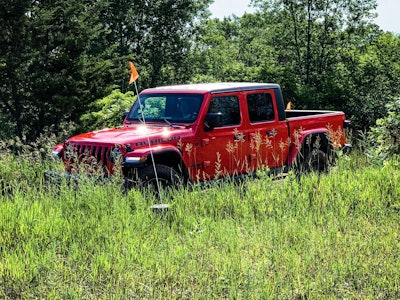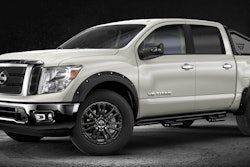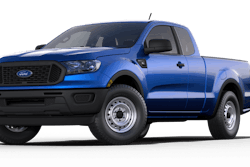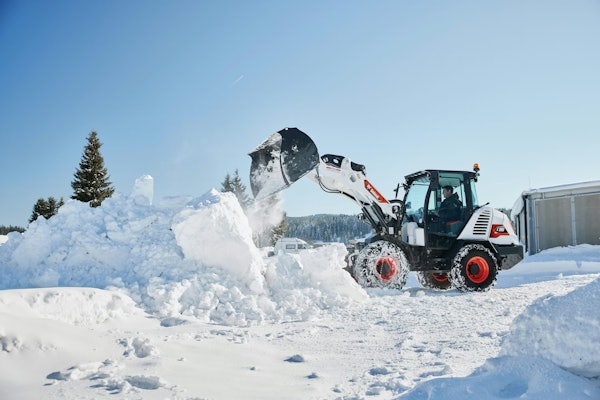
A couple of weeks ago I spent most of a day at FCA’s Chelsea Proving Grounds driving the new 2020 Jeep Gladiator. It was fun. A lot of fun, actually. And despite all that fun, the biggest question I came away with in regard to this very fun truck was “Why?”
Over the course of the day, I saw just about everything the Gladiator is capable of, and it may be the ultimate Swiss Army Truck. But does anybody out there really need a Swiss Army Truck?
So, near the end of the day and after a smooth towing demonstration with the truck, I put that question to FCA spokesman Scott Brown. “Why did Jeep make this truck?” I asked him. “Who exactly is this truck for?”
Brown said that FCA has found that when it loses a Jeep Wrangler customer to another vehicle, that new vehicle is typically a pickup truck.
“We built it for the Wrangler guy who wants or needs a truck,” Brown said.
That makes sense. It’s also a very specific person to make a pickup truck for. I would venture to say that it might classify the Gladiator as a niche vehicle, despite its wide appeal to just about anybody who looks at it.
But, that’s kind of the point. With the success GM and Ford have seen with the Chevy Colorado and the new Ranger, respectively, FCA wanted to get back into the resurrected mid-size truck segment. And while they could have done that by bringing back the Dodge Dakota, the company decided that it would rather re-enter the segment with a purpose-built vehicle.
All Jeep, all pickup
More than a few times during my time in Chelsea, I heard the line “we knew the Gladiator had to be 100 percent Jeep, and 100 percent truck.” Before I got into the truck, I was skeptical. But! They did it. It’s a weird and absolutely delightful mixture of both Wrangler and Ram with a comfortable interior that will confuse the hell out of just about anyone on the market for a mid-size pickup.
To get a feel of just how much Ram and Wrangler DNA can be found in the Gladiator, I spent a few hours on an off-road course at the Proving Grounds, where I was able to drive, one after the other, a Ram Rebel, a Jeep Wrangler and, finally, the Gladiator.
The course takes between 20-30 minutes to crawl through and features a myriad of different obstacles that assist Jeep engineers in developing these vehicles, while also serving as a demonstration area once they’re complete.
To start, I hopped in a Ram Rebel 1500, threw the truck into 4LO and entered the trail. This particular Rebel was equipped with Ram’s optional air suspension, which I placed into the off-road high position. The Rebel glided over every obstacle with ease. A steep stair climb was no problem. Three feet of water might as well have been a puddle. The truck even displayed little trouble wobbling through the risky-looking offset rut obstacle, where the trail throws a series of small mounds positioned diagonal to one another under your tires as a way to show off axle articulation.
In the Rebel, I hardly felt anything. And because of the truck’s height, you don’t see much either. (Side note: Don’t sleep on the Rebel. It’s a fun truck that Ram just keeps making better.)
Next up was a two-door Wrangler which is such a different vehicle that the drive almost felt like I was going through a different trail. If the Rebel glides through a trail, the Wrangler crawls through it like a spider. You feel the terrain. You get more of a rush by climbing that 40-degree incline. And you have to approach certain things differently in the Wrangler than you would in the Rebel. For instance, I had to take a different line on the stair climb due to the Wrangler’s shorter wheel base. In the Rebel, I was 3/4 up the stair case before the truck’s wheels were all on the stairs. In the Wrangler that transition happened sooner and on the first couple attempts, the back tires slipped. (I’m also nowhere near a veteran off-road driver. The Wrangler handled the obstacle fine, but you’ll have a much easier time in the Rebel.)

Finally it was time to hop in the Gladiator. I placed the truck in 4LO and in manual first gear, which Jeep engineers told me has been optimized specifically for navigating off-road trails with ease. To be honest, the Jeep pickup felt a lot like a repeat trip of the Wrangler. That is, until you encountered obstacles where the Gladiator’s nearly 40 inches of extra wheel base over the two-door Wrangler come into play.
On the stair climb, where the Wrangler slipped up a bit, the Gladiator climbed up and over without a hitch. And while the Rebel provided similar climbing performance, the Gladiator’s was quicker thanks to the Jeep truck’s lighter weight and lower approach. Another benefit over the Rebel is that you can better see the terrain. The Gladiator was also able to squeeze into tight portions of the trail that FCA officials said the Rebel was too large to get into and out of.
Though a six-speed transmission comes standard on the Gladiator, you’re going to want to pony up the extra $2,000 for the eight-speed. It makes a difference on the trail and when towing.
Speaking of towing, I also had the chance to tow a boat and trailer on a roughly 1.5-mile loop. The truck’s 3.6-liter V6 and that eight-speed gearbox delivered quick acceleration for the 6,100 pounds in tow. At the turn-around spot, braking was nice and smooth and maneuvering the truck, boat and trailer into the opposite direction was easy.
If you’ll be doing a lot of towing, you might want to wait a bit. I was told by more than one FCA spokesperson that the Gladiator will be getting a 3-liter diesel engine option. They would not, however, tell me when. The fact that they told me at all leads me to believe that next model year is looking good. Even without the optional integrated trailer brake, the Gladiator I drove did an admirable job bringing the boat and trailer to a halt. But throw in the trailer brake and exhaust braking and you’ll be extremely comfortable towing fairly big loads with this truck.
I also drove the Gladiator on a couple of asphalt courses including a 2-mile loop and a zig-zagging section. On the road, the Gladiator has the feeling of a premium SUV. It cornered nimbly in tight turns and was comfortable to drive on open road.
At the end of the day, the only problem that came to mind with the Gladiator is that, unless you’re a Wrangler-lover who needs a truck, you’ll have to convince yourself you need it. The Gladiator I drove, with a fiberglass top, leather seats and the premium sound system will set you back at least $50,000. That might be out of the range many mid-size customers are willing to pay, and it likely doesn’t offer all of the truckiness that it would take to convert a half-or one-ton truck customer.
While the interior was comfortable, it wasn’t nearly as spacious as that of the Ram Rebel, or any other 2019 Ram half-ton. And though the Gladiator’s 7,650 pounds of towing capacity is best-in-class, it’s still a far cry from what a half-ton can pull, let alone the 35,100 pounds the Ram 3500 is capable of towing.
In other words, the Gladiator, while a fun and exciting truck, is hard to recommend to someone who really needs a truck. However, don’t underestimate just how fun it is.
It might not be the most practical pickup on the market. But it’s certainly the most interesting.














